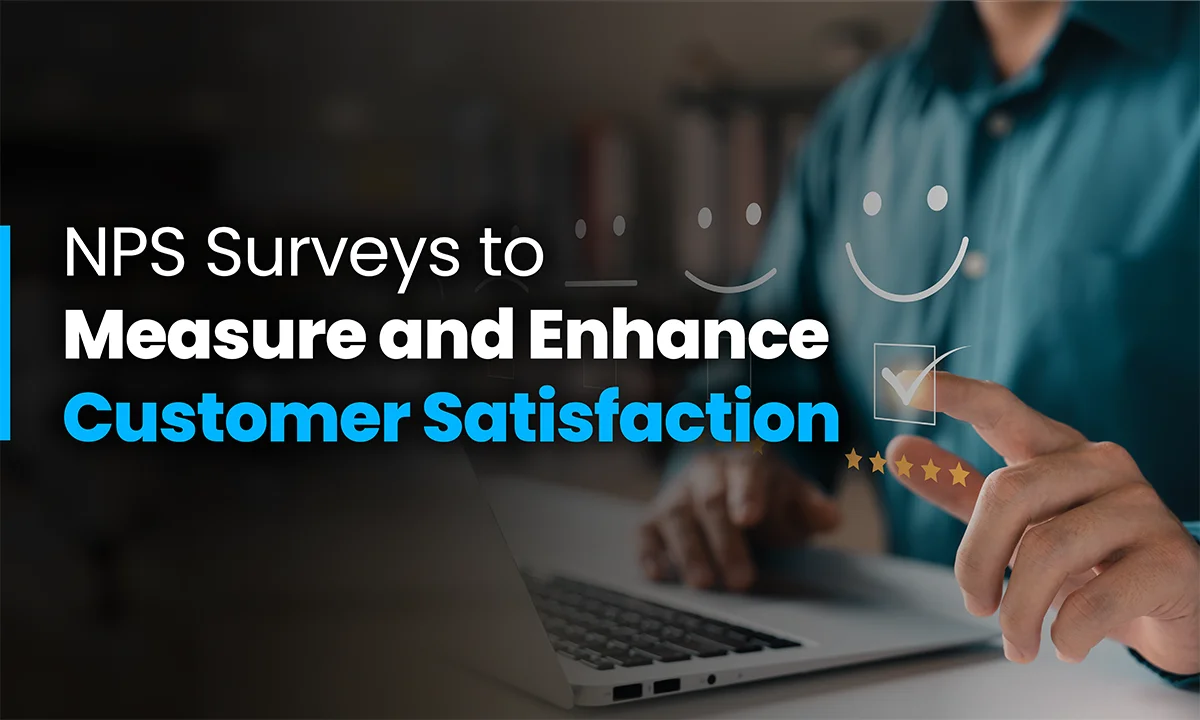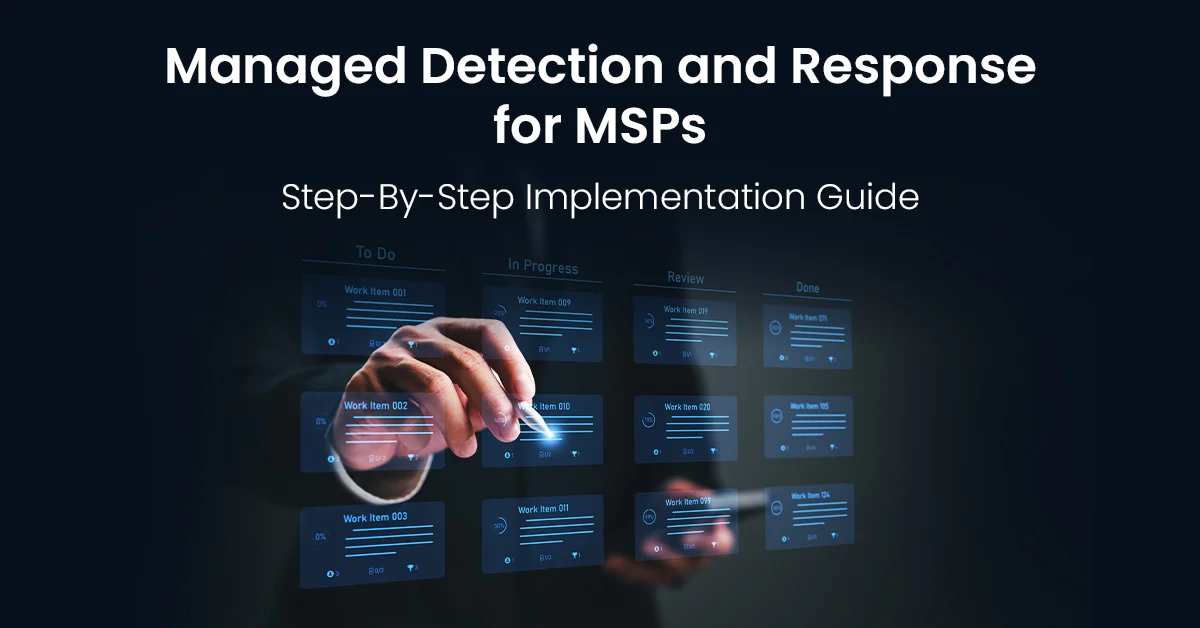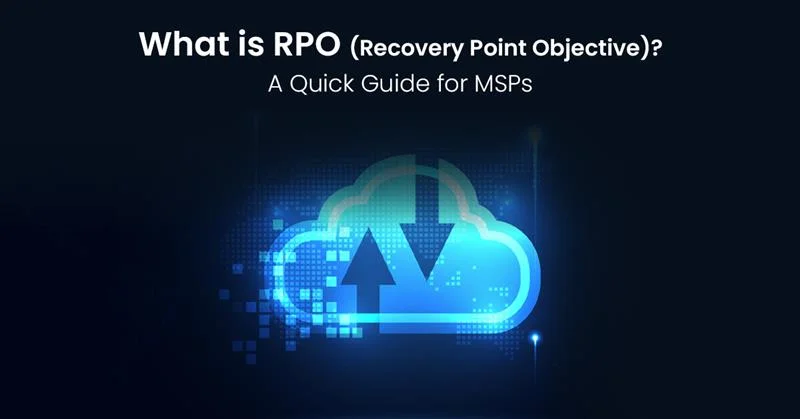Measuring the customer experience seems like such a vague concept. What is the best way to obtain a measure that really represents consumers’ brand loyalty? Net promoter score (NPS) surveys is the answer. In this blog, you will learn all the important things about NPS, NPS surveys, how to calculate the score and its advantages.
What is an NPS Survey?
NPS surveys allow you to quantify customer loyalty objectively while also expanding your clientele and motivating current ones. You can convert your inactive followers into active promoters by finding the clients who are the happiest with your services.
This survey includes a collection of questions such as “How likely is it that you will refer this business to a friend or colleague?” or “What leads you to choose our business to refer to your friends or colleagues?” The answers to these questions provide you with the information you need to promptly ascertain how clients feel about your MSP and address any unfavorable comments. Establishing external and internal performance criteria to assess rivals in your sector is also made simple by this survey.
What is Net Promoter Score?
Businesses employ net promoter score, a widely valued loyalty statistic, to gather the consumer input necessary to guide your company strategy. Many believe it to be a more accurate measure of consumer loyalty than conventional polls of customer satisfaction.
NPS is regarded as the gold standard for gauging patron loyalty. When you gain a customer’s loyalty, they will pick your brand above that of your rivals, convenience or cost aside. Because your service satisfies all your wants, loyal consumers don’t see the need to test other brands. They feel at ease endorsing your MSP to others as well. Earned brand loyalty has a direct impact on your revenue stream through recurring sales and word-of-mouth marketing that attracts new clients.
The NPS is distinct in that it poses a single query. However, the response to that query demonstrates how to expand your brand through retaining customers and getting them to suggest it to others. Many businesses that employ NPS also include one or two elaborative questions to provide context for respondents’ responses and provide insights into your reasoning. In this way, you can determine how people feel about your MSP and why they feel that way.
How to create a Net Promoter Score Survey?
One question that forecasts the chance of both repurchase and referral is the foundation of the NPS survey, and it is posed to consumers. “What is the likelihood that you would refer a friend or colleague to this business?” On a scale of 0 to 10, customers rank your responses.
The responses of your customers are categorized as follows:
- 0–6 = Detractors: disgruntled consumers who may damage your brand by spreading unfavorable rumors.
- 7–8 = Passives: contented but uninvolved clients who could be influenced by the competition
- 9–10 = Promoters, or devoted consumers who will continue to make purchases and recommend others
You may track brand loyalty by using the benchmark your NPS data sets. Establish a plan to gather NPS ratings twice a year, or more frequently if your clientele is vast. Consider events like product launches that might impact your results. Make plans for action to address improvements and monitor changes over time.
You may use net promoter score as a tool to develop, measure, assess and enhance client loyalty, regardless of how many questions you ask.
How to calculate NPS?
The following are five easy ways to get your Net Promoter Score:
- Provide the NPS Questionnaire to the people in your target market.
- Get your survey answers into an Excel spreadsheet by downloading them.
- Determine which of your respondents are Detractors, Passives and Promoters in your spreadsheet by totaling the replies for each category.
- By taking the group total and dividing it by the overall number of survey replies, you can find the percentage total for each group.
- Your Net Promoter Score (NPS) may be calculated by deducting the proportion of all Detractors from all Promoters.
For instance, if your survey received 100 responses:
- 20 replies fell into the 7–8 range (Passives),
- 10 responses fell into the 0–6 range (Detractors).
- 70 of the answers fell between 9 and 10 (Promoters).
When you calculate it, you will get 10%, 20% and 70% of each group’s percentage. Sixty percent is obtained by deducting 10% (Detractors) from 70% (Promoters). Your NPS is 60 since a net promoter score is always displayed as an integer rather than a percentage.
Benefits of NPS surveys for your MSP
Customers are essentially asked whether they are taking the time to say nice things about your business or brand when you ask them for the NPS score inquiry. Since opinions circulate more quickly these days thanks to social media, internet forums, and reviews, word-of-mouth really does matter a lot.
The NPS is also used by businesses and organizations of all sizes, from startups to some of the biggest names in the world, to monitor performance and gauge customer satisfaction since it is:
- Easy to compute and straightforward: Your net promoter score may be found with only one inquiry. You can quickly create and distribute your survey using any net promoter score template.
- Quantifiable: With only one straightforward statistic, management can assess how well your business is doing. The NPS presents widely used terms that are simple for everyone to grasp.
- Standardized: Trusted by companies such as American Express, Apple, GE, JetBlue, and Kaiser Permanente, NPS is widely recognized as the benchmark for gauging and enhancing customer loyalty.
- Measurable: Having the opportunity to examine how your company compares to the competition is one of the most useful features. With hundreds of businesses utilizing NPS, you have a standard to assess and monitor your performance both internally and in relation to external NPS benchmarks.
How MSPs can utilize NPS to improve customer satisfaction and advocacy
Net promoter score is a powerful tool that can be effectively utilized by your MSP to enhance customer satisfaction and advocacy. Originating as a customer loyalty metric, NPS has evolved to become a versatile tool that can offer valuable insights into customer sentiment and preferences. By understanding and acting on NPS feedback, you can make informed decisions to improve service quality at your MSP, build stronger relationships with clients and foster advocacy within your customer base. By leveraging NPS effectively, your MSP can improve these areas:
- Identifying Areas for Improvement: NPS surveys provide direct feedback from customers about their experience working with your MSP. By analyzing this feedback, your MSP can identify the specific areas where improvements are needed to enhance customer satisfaction.
- Addressing Detractors: Net promoter score can help your MSP identify detractors (customers with scores of 0-6) who are not satisfied with the service. Proactively reaching out to these customers to address your concerns can help resolve issues and improve satisfaction levels.
- Nurturing Promoters: It also identifies promoters (customers with scores of 9-10) who are highly satisfied and likely to recommend your MSP. Engaging with these promoters to encourage testimonials, referrals or online reviews can amplify positive word-of-mouth and attract new customers.
- Monitoring Trends: Tracking NPS scores over time allows MSPs to monitor changes in customer sentiment and measure the impact of improvement efforts. This helps in identifying effective strategies for enhancing satisfaction and advocacy.
- Benchmarking Performance: Comparing NPS scores against industry benchmarks or competitors’ scores provides insights into your MSP’s relative performance and areas where they can strive to excel.
- Driving Accountability: Making NPS scores visible to the team fosters accountability and encourages employees to focus on delivering exceptional service. Recognizing and rewarding team members who contribute to high NPS can further motivate them to prioritize customer satisfaction.
- Integrating Feedback into Strategy: Incorporating NPS feedback into strategic planning and decision-making processes ensures that customer satisfaction remains a priority for your MSP. This customer-centric approach can lead to long-term loyalty and advocacy.
How does Team GPS help you build and manage NPS surveys effortlessly?
Team GPS offers a seamless solution for building and managing NPS surveys effortlessly, making it easier than ever for your MSP to gauge customer satisfaction and loyalty. It also automates the survey distribution process, allowing your MSP to send out NPS surveys to your clients via email, SMS, or other channels with just a few clicks.
Talk to us today to elevate your NPS game with Team GPS and unlock the full potential of customer feedback to drive business growth and success.








